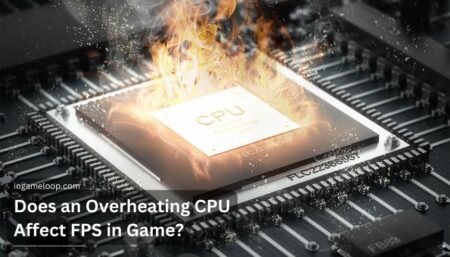![What are CPU Cores? [All functions explained] 2024](https://www.ingameloop.com/wp-content/uploads/What-are-CPU-Cores.jpg)
A processor is necessary for every computer to operate, whether a little processor with high efficiency or a massive processor with high performance. The processor, often known as the CPU or central processing unit, is a crucial factor of a working system, but it is not the only one. Most modern processors are at least dual-core, meaning that the CPU has two independent processing cores. But what precisely are processor cores, and how do they work? Let’s uncover!
Key Takeaways
- CPU cores are the individual processing units within a CPU that can execute instructions and tasks independently.
- More CPU cores can increase the performance and efficiency of a CPU, as they can handle more data and processes simultaneously.
- However, more CPU cores also consume more power and generate more heat, which may require better cooling and power supply.
- Moreover, more CPU cores do not always guarantee better performance, as some applications and games may not utilize all the cores effectively or optimally.
- Therefore, you should consider the quality and compatibility of the CPU cores, as well as the core count, when choosing a CPU for your PC.
What are CPU Cores?
A CPU core is like a dedicated processing unit within the actual Central Processing Unit or CPU. Each core is essentially its own independent processor, capable of executing instructions and performing calculations. In other words, a CPU core is a pathway through which a processor runs particular instructions or operations. You can expect better performance and processing power if there are more pathways.
A CPU can have one or multiple cores. That can have a significant impact on performance, as you can see in our CPU Benchmarks Hierarchy. Most of the processors can divide a core into virtual cores, or threads, using a method called simultaneous multithreading or, if it’s an Intel CPU, Hyper-threading. Different apps utilize numerous threads in different ways.
Function of a CPU Core
A CPU core performs the primary processing tasks of a computer. It retrieves instructions from memory, decodes them, and then executes them. The core manages the flow of data in and out of the computer and communicates with other components, such as memory and storage. The core also performs calculations, logical operations, and other tasks required by the operating system and the applications running on the computer.
In multi-core processors, each core operates independently, allowing the computer to perform multiple tasks simultaneously. This is known as multi-tasking or multi-threading. Each core can run its own set of instructions, enabling the computer to run several applications simultaneously without slowing down. This can improve the overall performance of the computer and can also reduce the time it takes to complete a specific task.
Let’s deeply understand how a CPU performs, or you may say, it repeats the cycle of fetch, decode, execute, and writeback!
1. Fetch
The processor core receives waiting instructions, typically from some type of memory. RAM might be one of these, although modern processors usually have the instructions ready for the core in the CPU cache. The program counter, which serves as a kind of bookmark for the CPU, tells it where the previous instruction stopped and where the next one started.
2. Decode
It then begins to decode the current command after obtaining it. The processor core must decide how to handle instructions that frequently require different parts of the CPU core, like arithmetic. Each component has a feature known as an opcode that instructs the processor core on what to do with the data that follows it.
3. Execute
The CPU knows what needs to be done and actually performs it at the execution stage. Several things happen at this point depending on the information entered and the area of the CPU core being used. For instance, the processor’s ALU, or Arithmetic Logic Unit, may do mathematical operations.
4. Writeback
The final stage, known as write back, just stores the finished product back in memory. The output’s exact location depends on the needs of the currently running application. Still, it frequently remains in CPU registers for easy access because the instructions that follow often use it.
Conclusion
The CPU, or Central Processing Unit, is a necessary component of every computer and is responsible for most processing tasks. A CPU can have one or multiple cores, allowing it to perform numerous tasks simultaneously. This improves performance and reduces the time it takes to complete a task.
Each core is a processing unit within a CPU and operates independently, allowing the computer to perform multiple tasks simultaneously. The CPU cores perform tasks such as retrieving instructions, decoding them, performing calculations, managing data flow, and communicating with other computer components.
Frequently Asked Questions
How many cores of a CPU do I need?
Your device needs many CPU cores to run more resource-intensive programs or multiple apps simultaneously. Most people on a tight budget prefer dual-core processors. You should think about switching to a quad-core processor if you take your gaming seriously.
If you’re a professional player or an aspiring one, octa-core processors are fantastic. More cores are recommended for video gamers who play, record, and intense stream games. This is your sweet spot if you frequently use power-hungry software like VR or AutoCAD.
Is a higher CPU speed better than more cores?
Depending on what you need from your device, you may decide to have a greater CPU speed or more cores. A quicker CPU speed often makes it easier to load applications quickly, and having more cores allows you to run more programs simultaneously and switch between them more easily.
You should have more cores and a slower CPU performance if you frequently run many apps simultaneously and load a lot of software.
Choose a high CPU speed and fewer cores if you want to play processor-intensive video games or run programs that quickly output large volumes of information.
This will define the generation and type of CPU you want. Remember that newer CPUs will probably operate much more effectively than older ones. Additionally, making some space available on your hard drive will simplify your CPU’s access to data, which will benefit all of your computing.





![Is an Intel Celeron Processor Good? [2024]](https://www.ingameloop.com/wp-content/uploads/Is-an-Intel-Celeron-Processor-Good-450x257.jpg)
